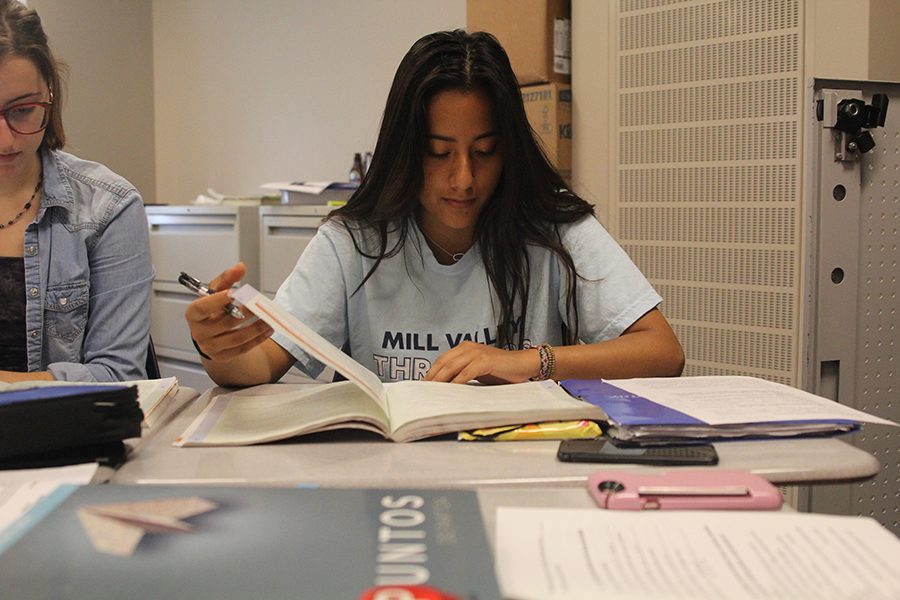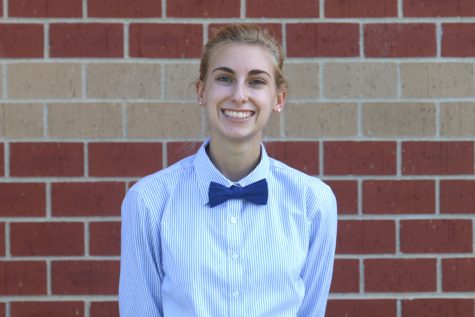Spanish Department administers STAMP biliteracy exam
The Spanish department selected a limited number of Spanish students to take the STAMP biliteracy test Tuesday, Apr. 20.
Using her textbook during a test, junior Zurieli Rojas is an example of what students selected to take the STAMP biliteracy exam looked like on Tuesday, Apr. 20.
April 26, 2021
For the first time, selected students were to take part in an experimental administration of the Standards-Based Measurement of Proficiency (STAMP) biliteracy test Tuesday, April 20.
There are four components of the STAMP biliteracy test which includes a writing, speaking, listening, and reading component.
The Spanish department selected 12 students in Spanish one and two and the rest of the students selected were in Spanish three, four and five.
One such Spanish student selected to take the STAMP test is Junior Madison Vosburg, who felt that the test went extremely well for her.
“I think I did well on the test because I was confident in my answers,” Vosburg said. “I liked that the test was not timed so I got to go at my own pace.”
Spanish teacher Siri Campbell was one of the proctors for the STAMP test, which was a voluntary exam that the department opted into administering.
“This was the first year for us to give the exam and since we were just learning about it,” Campbell said. “It was voluntary, but paid for by our department.”
Another student selected to take the exam was Junior Noah Webber, who found the administering and taking of the test itself extremely difficult.
“The process was a bit rough, specifically in the speaking portion, as it was awkward and difficult to use the headphones, and the website said we needed to be louder which would have been difficult since we were near other test-takers,” Webber said.
Despite having difficulty with the speaking portion of the exam, Vosburg is glad she took the exam.
“I was glad I took the test because it was good practice for next year and I got to see what level of Spanish understanding I was on,” Vosburg said.
Campbell explained what the students could get out of the test, both for their high school career and for their future life.
“Meeting advanced standards on the STAMP test will qualify students to receive the Seal of Biliteracy. This is a distinction where students will receive a certificate of recognition from the Kansas State Department of Education (KSDE),” Campbell said. “The Seal of Biliteracy provides students with a competitive edge in the employment market as well as opportunities for higher education.”
Although he found the administering of the exam difficult, much like Vosburg, Webber is also glad he took the exam.
“I’m glad I took it, although I’m not quite sure what I got out of it. To be honest, it was a pretty bad experience, and I would almost rather take the ACT,” Webber said. “Each section needs a lot of reworking — too much to describe in this interview — and I’m not sure I will take it again if I have the opportunity.”










